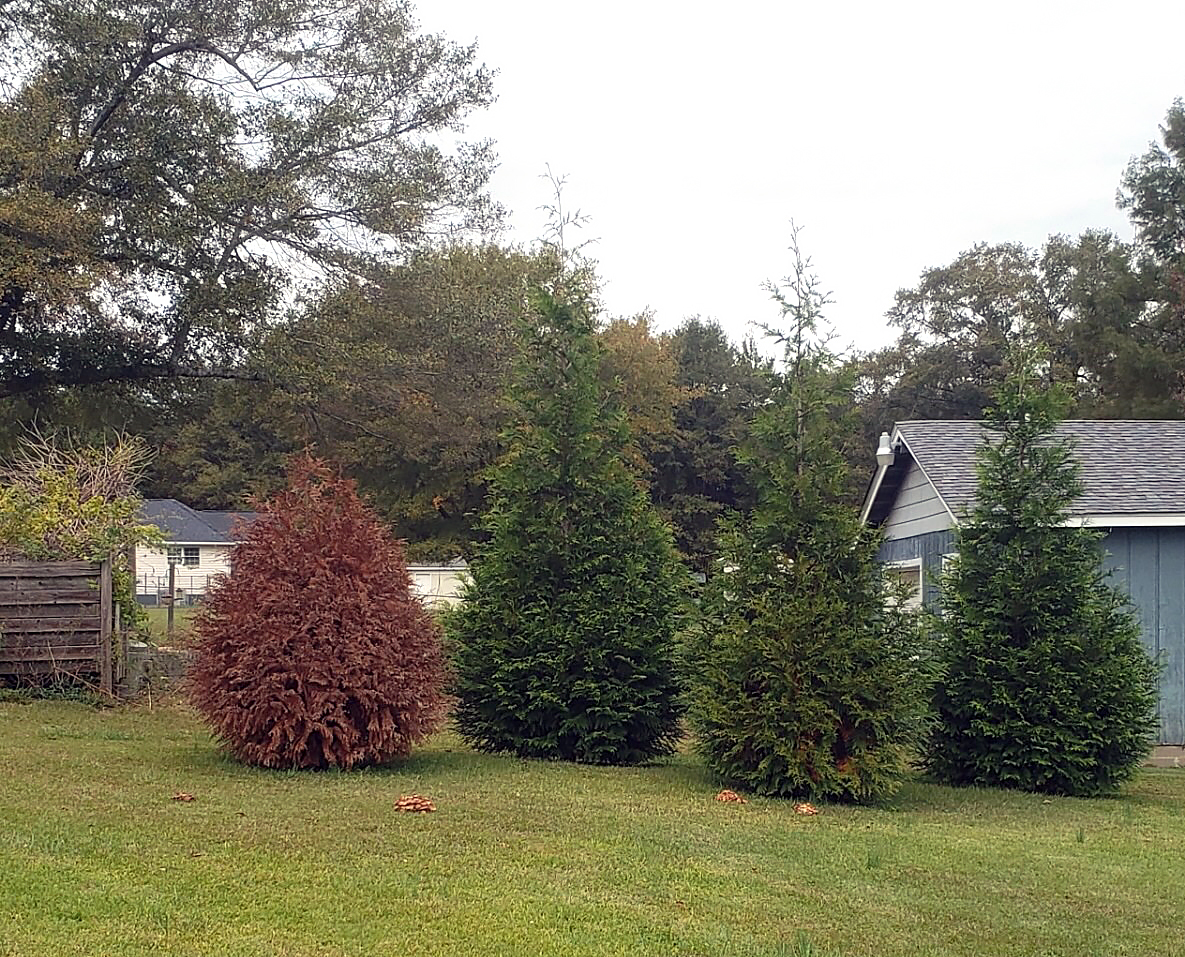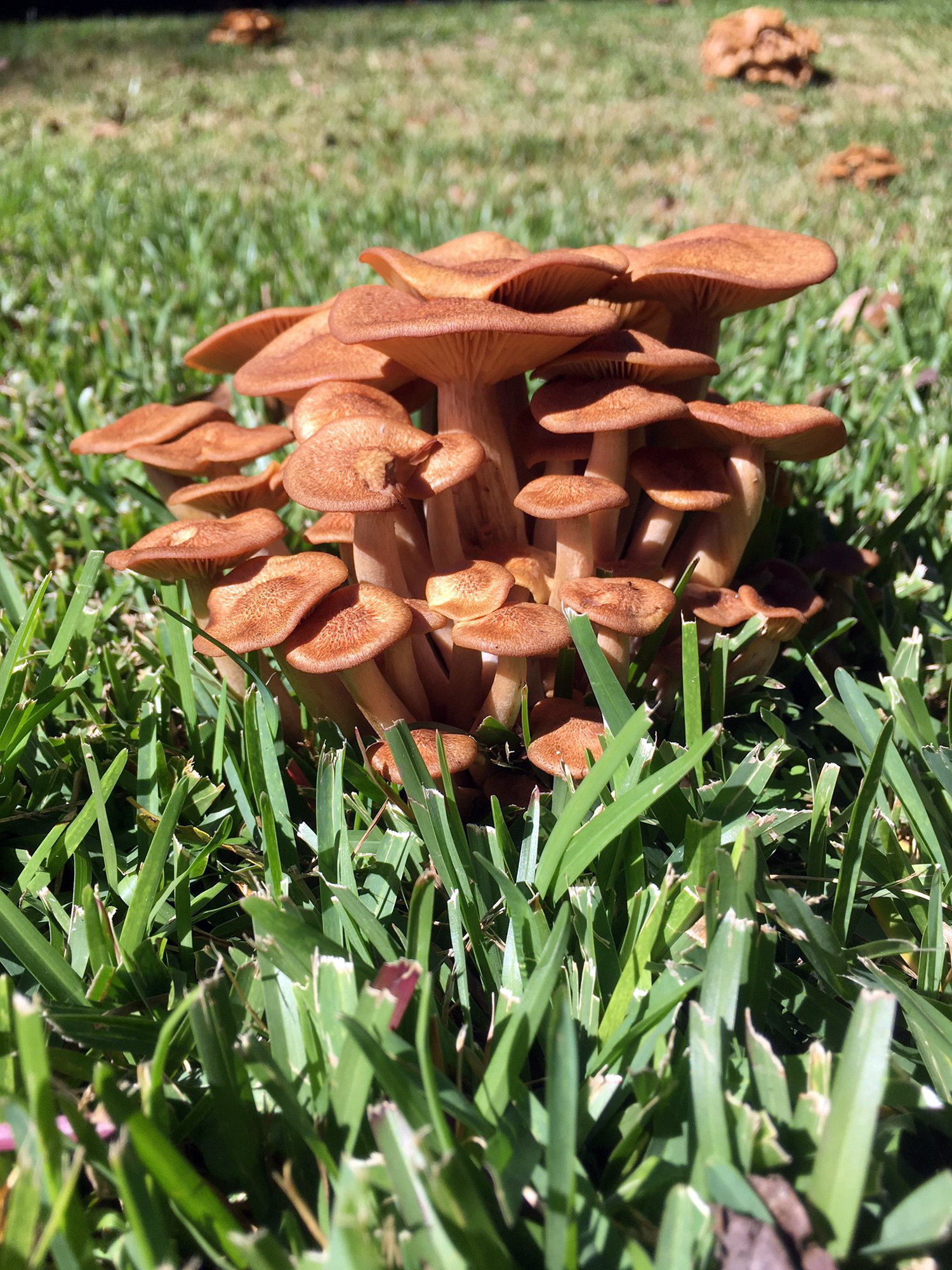We had tremendous participation in the December Puzzler!
Kevin Ong, professor and Extension specialist with Texas A&M AgriLife Extension Service in College Station, Texas, was selected as the winner from our correct entries. 
The answer provided by the submitter of December’s Plant Puzzler is Armillaria root rot. Clumps of mushrooms can be seen in the yard. The other trees are in danger and may already have some root or lower trunk rot. One of the “green” trees also appears to be slightly off color.
Did you know that Armillaria is morphologically divided into a ringed group (mushrooms with an annulus on their stems) and a ringless group (mushrooms without an annulus)? The ring-forming mushrooms are classified in the genus Armillaria and the ringless mushrooms are classified in the genus Desarmillaria.
The fungus historically referred to as Armillaria tabescens in both Europe and North America is ringless and was reclassified as Desarmillaria tabescens. Research published in 2021 by Antonin, et al presents data indicating that the fungus referred to as D. tabescens in Europe is distinct both morphologically and phyllogenetically from the D. tabescens in North America and the two populations are reproductively incompatible. Phylogenetic analysis of specimens from the U.S. and Mexico suggests that D. tabescens is unlikely to occur in North America and the North American version (vicariant) of the fungus has been named D. caespitosa. The species name is derived from the Latin root caespes, which translates to sod or turf. Caespitose is defined as aggregated in tufts, but not grown together (Snell and Dick), which aptly describes the clumping habit of the mushrooms. 
Desarmillaria caespitosa is ringless and tends to occur in clumps.
(Photo: Clarissa Balbalian)
The NPDN Data committee has submitted a request to update the Pest Dictionary with three new codes: Desarmillaria sp./spp., Desarmillaria caespitosa, and Desarmillaria tabescens to help diagnosticians accommodate these recent changes in taxonomic nomenclature. Keeping the host and pest dictionaries up to date is just one of the important services provided by the NPDN Data committee. Consider joining their committee if you have an interest in taxonomy and NPDN data usage!
Antonín, Vladimír, Jane E. Stewart, Rosario Medel Ortiz, Mee-Sook Kim, Pierluigi (Enrico) Bonello, Michal Tomšovský & Ned B. Klopfenstein (2021) Desarmillaria caespitosa, a North American vicariant of D. tabescens, Mycologia, 113:4, 776-790, DOI: 10.1080/00275514.2021.1890969
Snell, Walter and Esther Dick (1957) A glossary of mycology. Harvard University Press.

